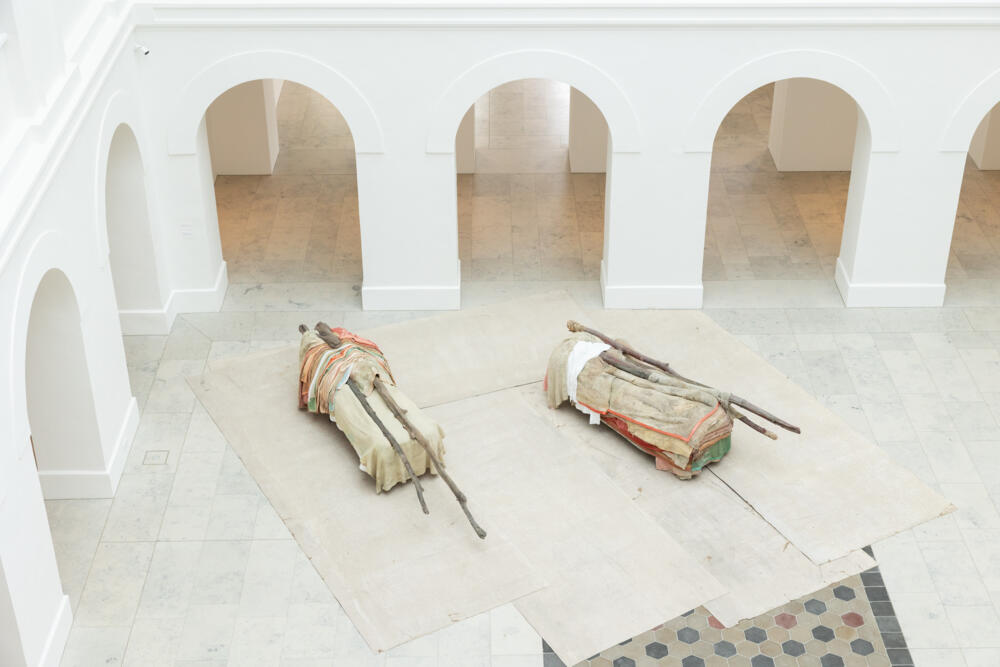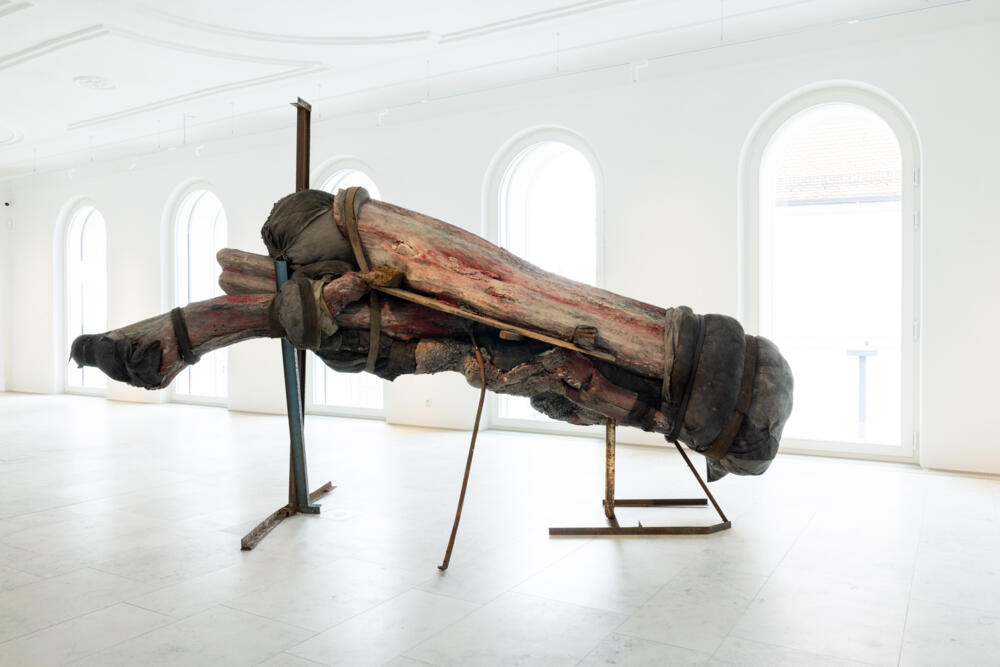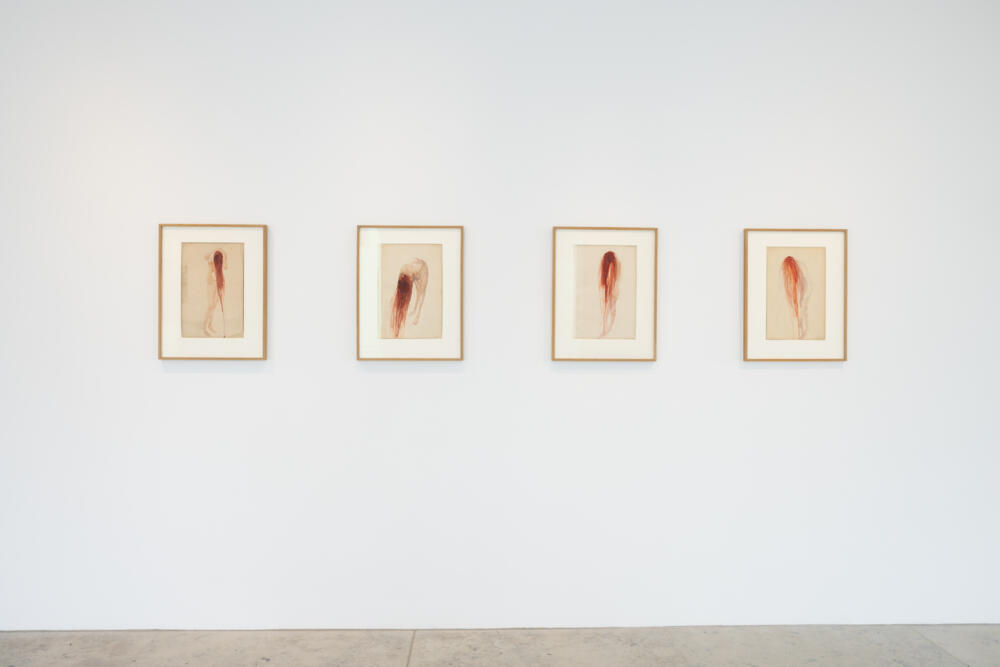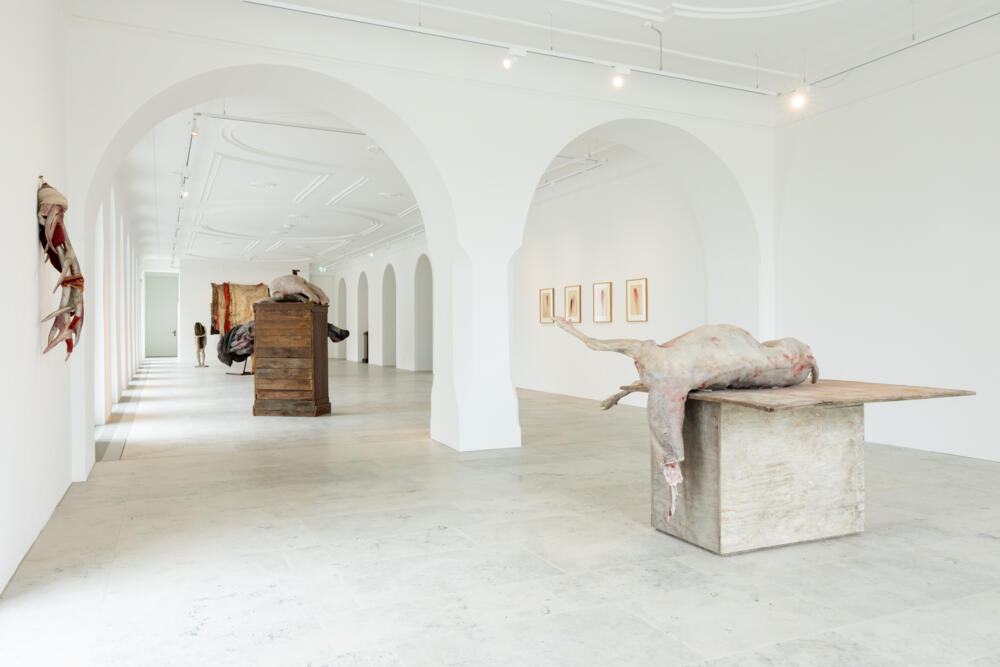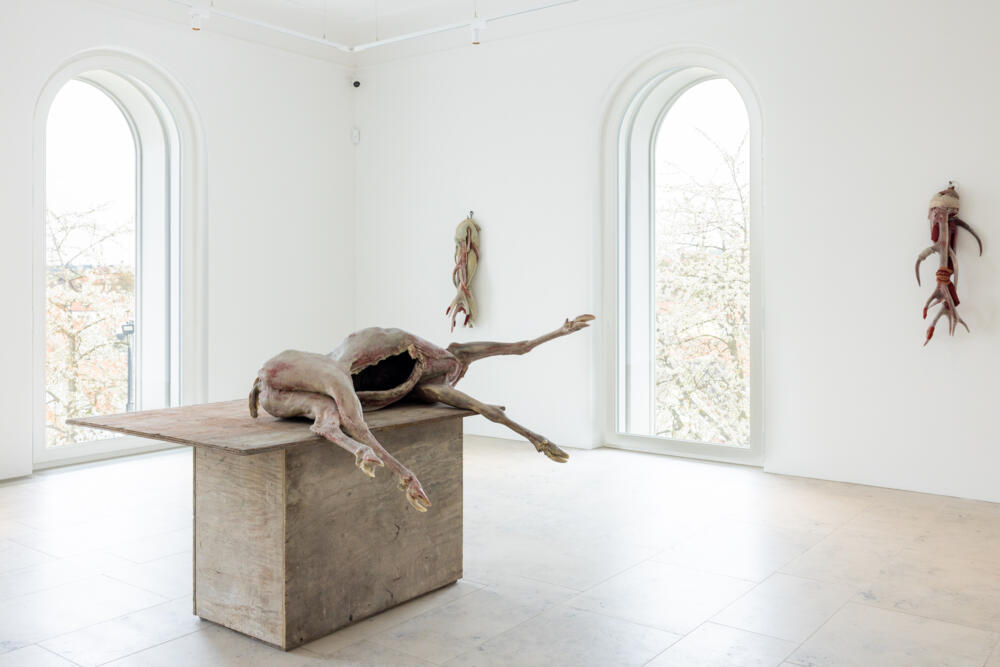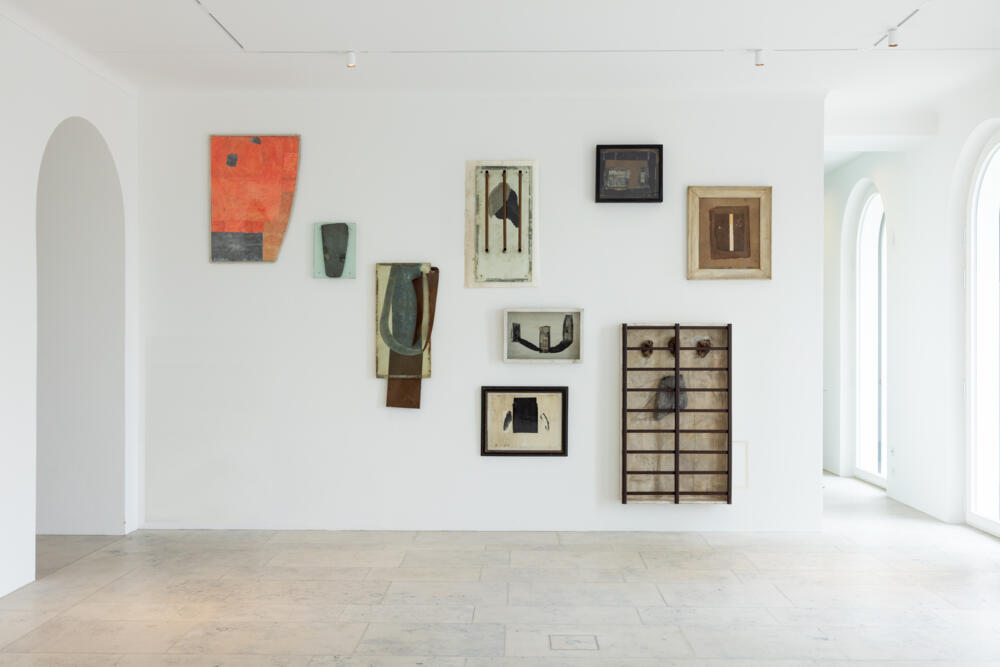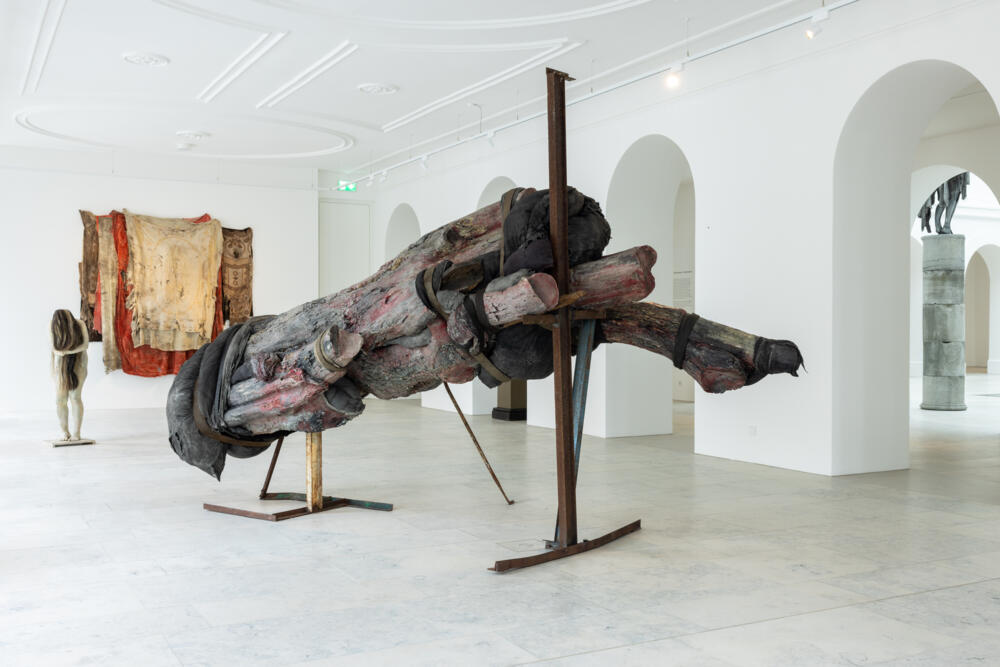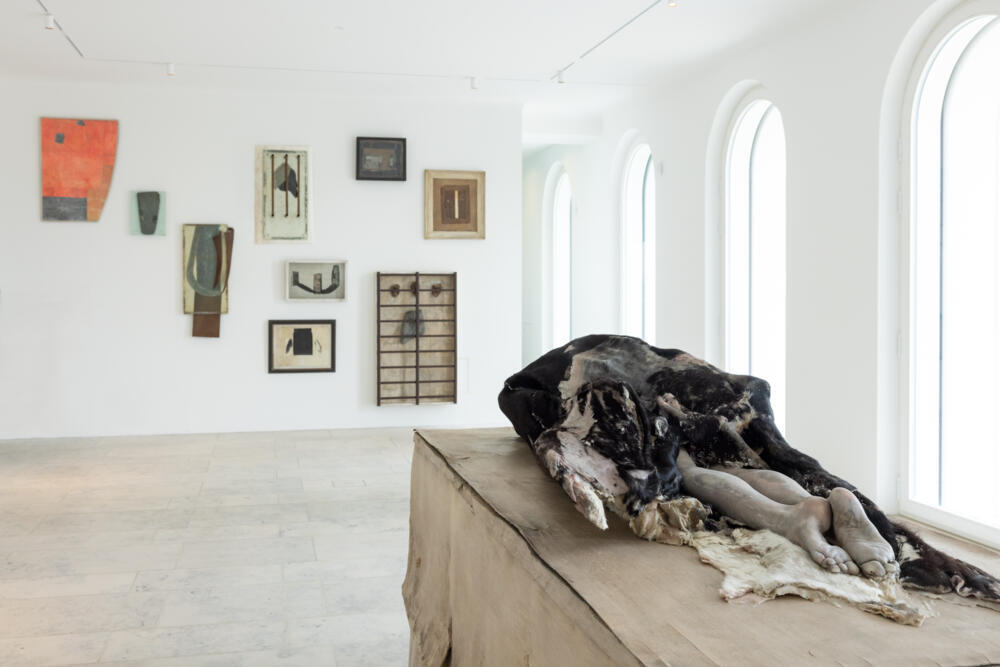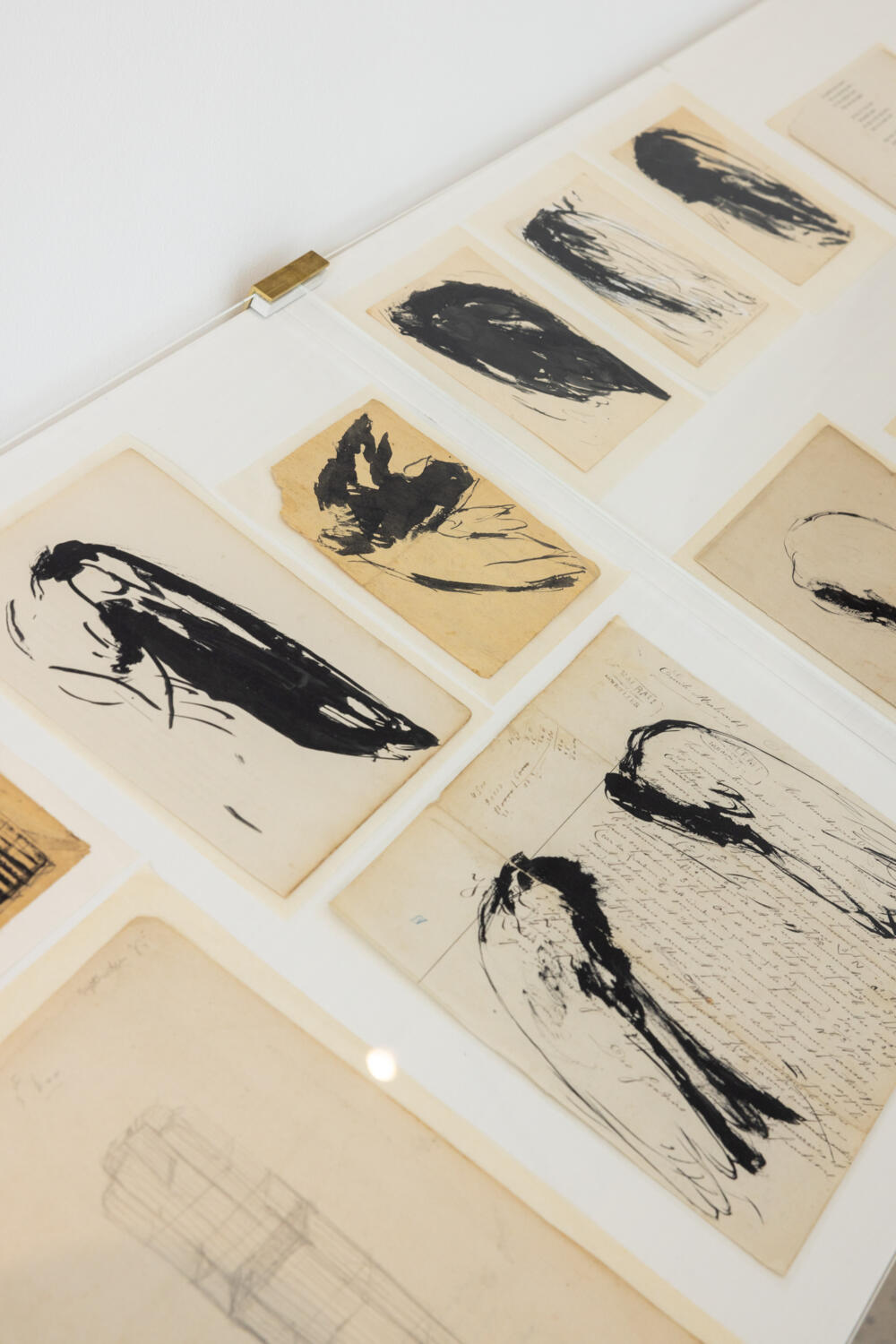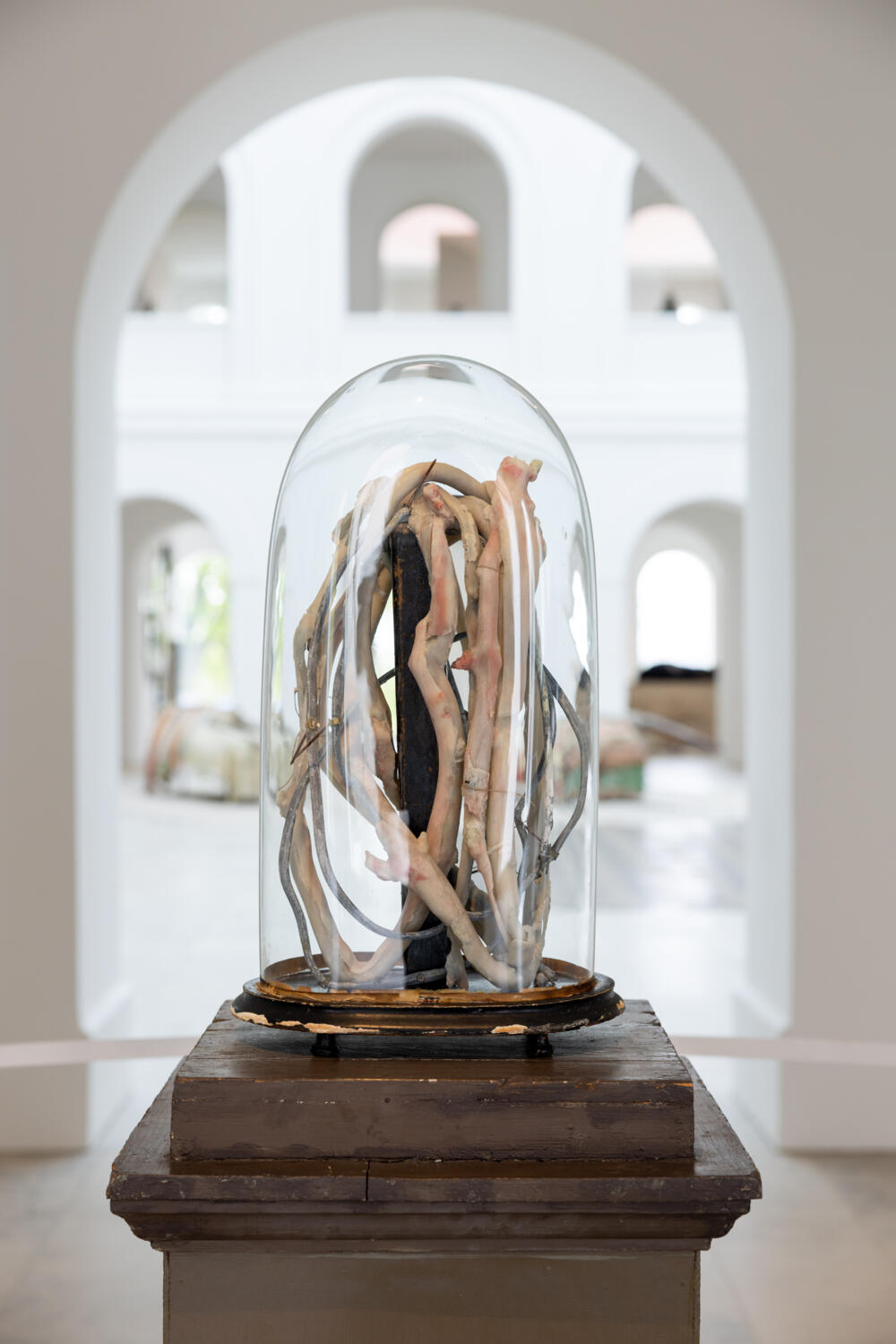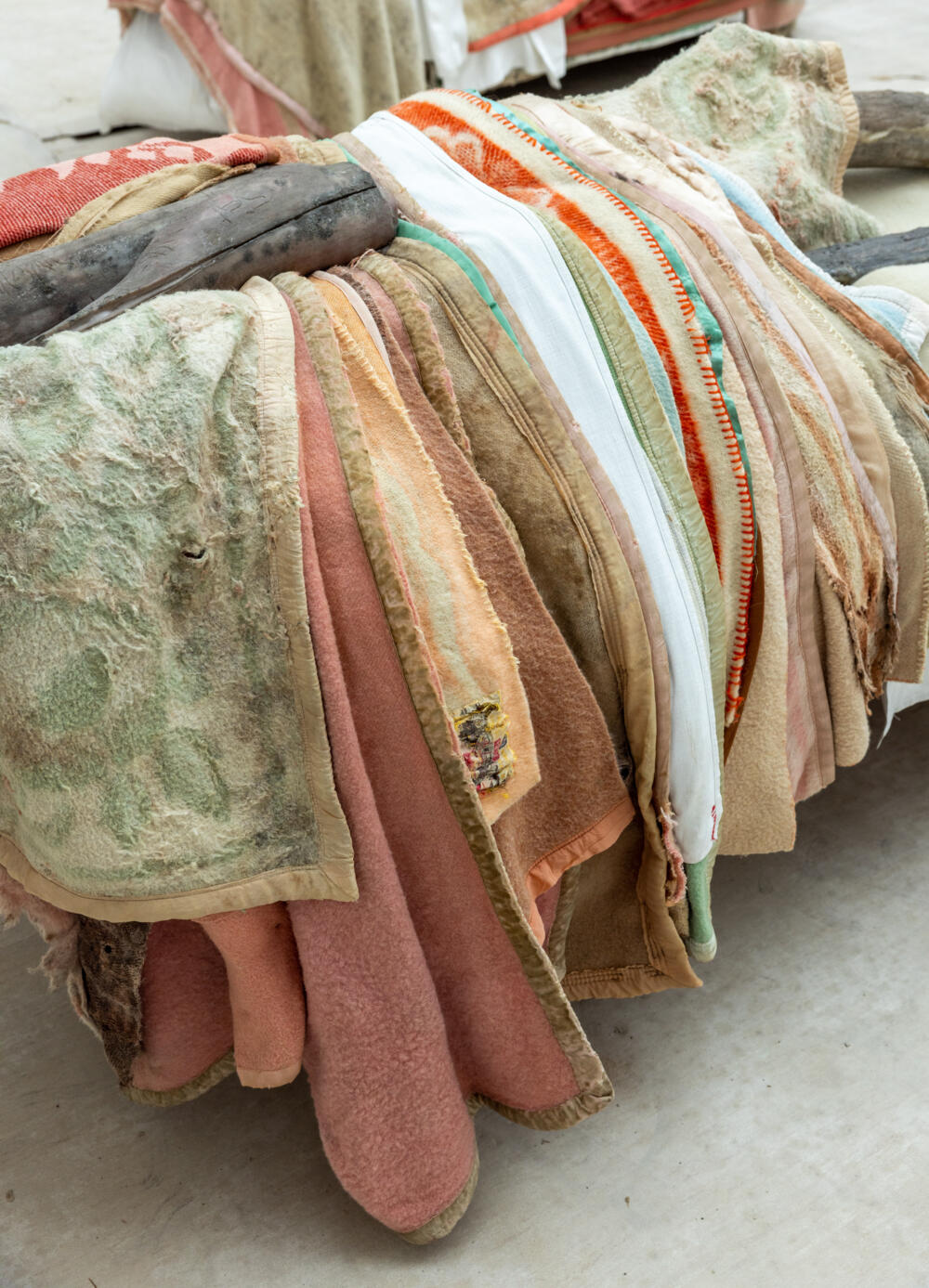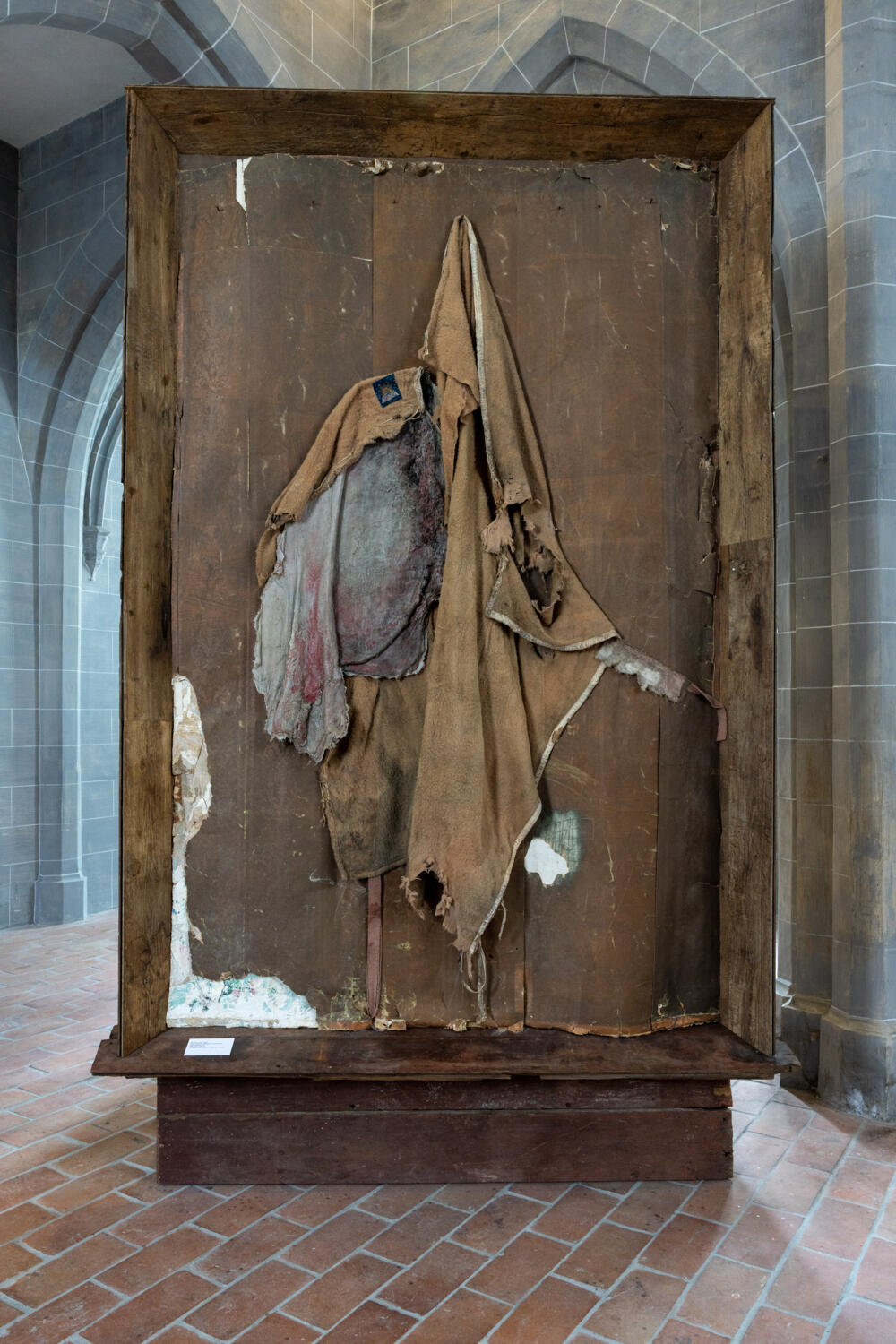In 2022 Berlinde De Bruyckere created Arcangelo (Freising), 2021-2022 for the reopened Diözesanmuseum Freising, a monumental, yet touching sculpture of a bronze angel covered in lead patina. Surpassing humans by far and yet approachable the Arcangelo fills the atrium with its presence. Around this mysterious angel, the Diözesanmuseum now presents an exhibition by the Belgian artist in the adjacent halls, reflecting on the museum’s rich historical collections and the history of the building itself. The figure of the Arcangelo, developed during the first Covid lockdown, is inspired by the care givers in hospitals, dedicating themselves to nurse those dying in solitary confinement.
In the Münchner Saal, the focus remains solely on the motif of the angel. The central piece, Liggende – Arcangelo III, 2023, was created especially for the exhibition. The collapsed angel fallen face down on a pedestal made of debris, is accompanied by a selection of very early works and sketches here shown for the first time, investigating the angel/the wing in Berlinde De Bruyckere’s oeuvre.
In the Freisinger Saal, a much more eclectic display, closely related to the collection spaces of the museum, explores a variety of sculptures and drawings, partly embedded in religious iconography, but touching simultaneously on more profane and universal topics in the social and political context.

